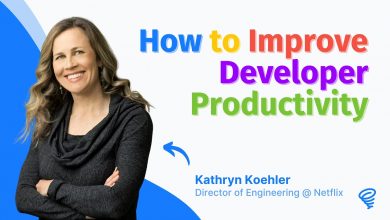BUPA: No Flow No DevOps!
BUPA identified a critical success factor being the flow of information across the organization, so that decision making and action can be accelerated.
 Speaking at the DevOps Enterprise Summit BUPA presented on ‘No Flow No DevOps!’.
Speaking at the DevOps Enterprise Summit BUPA presented on ‘No Flow No DevOps!’.
The talk was delivered by:
- Phillip Gadzinski – Group Global Head of Enablement – BUPA.
- Adarsh Mehrotra – DevOps CoE Head, Infosys Quality Consulting Unit – Infosys.
In a world of rapidly evolving challenges and a new organizational imperative Bupa set out to refresh their technology strategy. To deliver this they created a set of ‘COEs’ – Centres of Enablement, spanning Data and Analytics, Digital Transformation, Cloud & Technology and AI Machine Learning.
Across these they run a number of Communities of Practice, such as for Agile, Design, Innovation and Data Science.
Flow as an Enabler
BUPA identified a critical success factor being the flow of information across the organization, so that decision making and action can be accelerated. This means the time taken from understanding a customers requirements to delivering on that requirement.
Importantly the need for this at a global scope is understood, as teams are only component parts of the system, so flow must be designed at the holistic organizational level. To achieve this they defined a maturity model:
- Level 01: Ad-hoc task focus. No flow.
- Level 02: Repeatable team-driven flow.
- Level 03: Consistent value stream flow.
- Level 04: Optimized MU / system level flow.
- Level 05: Leading organizational flow.
This provides them with a framework to understand the capability maturity across functional teams relevant to their overall goal of speeding customer value.
Remote Agility Framework
To provide the practical means for individual teams to work within this overall paradigm BUPA makes use of RAF, the Remote Agility Framework.
This provides structures such as templates for spinning up new teams, so that those teams can collectively define how they will operate, within the overall Flow environment, such as the value streams of customer work to understand the relevant up and down stream processes you interface with, and the team roles and responsibilities.
DevOps Metrics
To provide the means for translating these goals into day to day measurability they developed a set of metrics, implemented through Power BI linked to Azure DevOps, and adopted the DORA program.
This combination of initiatives has begun to yield the following benefits and improvements for BUPA:
- Quality: As they are releasing more frequently quality has improved.
- Focus: Teams have been empowered to focus on the most important items in their backlog.
- Shortened cycle times: Reduced time to delivery.
A key goal is to increase use of the Flow Efficiency metric, a goal they find challenging as it requires a maturity of teams and tools so that Wait Times can be identified. So this is being incorporated as maturity improves across the teams.



